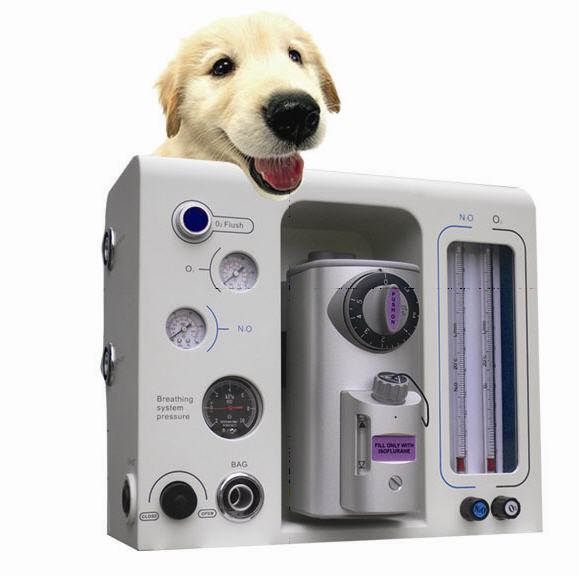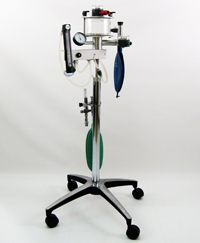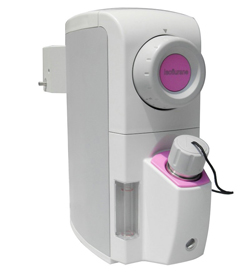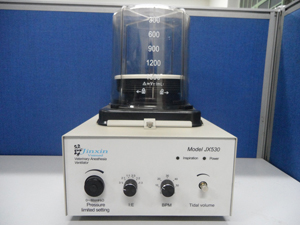Categories
Veterinary anesthesia machine

Inhalation anesthesia method is based on vapor or gas anesthetics inhalation. Filling the body with them is done by the anesthetics diffusion through the alveoli which depends on concentration, type of anesthetics, their solubility in blood and flesh, circulatory and breathing conditions.
Inhalation anesthesia is more controlled; it can be characterized by distinct anesthesia stages. Inhalation anesthesia can be produced by several methods, and, therefore, different veterinary anesthesia systems are used.
While holding open circuit anesthesia the anesthetic is inserted into animal’s lungs together with the air. The exhalation is done into the air ( Esmarch mask).
Semi-open circuit means the anesthetic gas insertion into lungs through the veterinary anesthesia equipment. The exhalation is done into the air.

While using a semi-close circuit, a part of gases is returned to the apparatus and can be used again. The gas excess is thrown into the air.
Close circuit exhalation is done only through the anesthetic apparatus.
Semi-close and close circuits demand using carbon dioxide absorber. Otherwise, hypercapnia is developed.
The bad points of open and semi-open circuits’ anesthesia are in a large flow of inhaled anesthetics,the presence of anesthetic gases in the operating room, which has a negative impact on the medical staff. Semi-closed and closed circuits of anesthesia are deprived of these negative aspects, but require additional technical equipment.
Non Inhalation Anesthesia
The main way of doing this is intravenous anesthesia. This type of anesthesia has its advantages, as it requires no veterinary anesthesia equipment and is relatively well tolerated by animals. The disadvantages of this anesthetic are bad controlling, the possibility of cardiac and respiratory complications in a few hours after the anesthesia. The use of this type of anesthesia is associated with a greater risk, especially with frail, older animals during long operations.
Veterinary Anesthesia Equipment
Modern online shops can offer a variety of veterinary anesthesia equipment from veterinary anesthesia machines, ventilators to vaporizers. There are a lot of economic multi-function anesthesia systems, with necessary monitoring and alarm functions to make sure the operation runs safely.
The ventilators are electronically time-cycled, have adjustable inspiratory time and flow rate. They can be used both for small and big animals.
Vaporizers are delivering the correct concentration of anesthetic gas. If the vaporizers have a leak of the agent into the O.R. atmosphere, it can cause a potential health risk to veterinarians and the staff. The vaporizer is to use in continuous flow techniques of inhalation anesthesia. Each vaporizer is gas specific and must be labeled with the anesthetic agent it is designed for. The vaporizer must be used together with Anesthesia Machine.

Veterinary anesthesia systems are usually provided with a vaporizer and a ventilator, CO2 Monitor, Multi-parameter monitor, Anesthesia depth monitor. When main gas supply is failed, backup gas supply can be automatically started.




